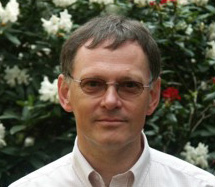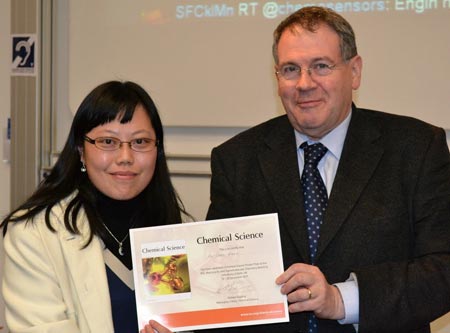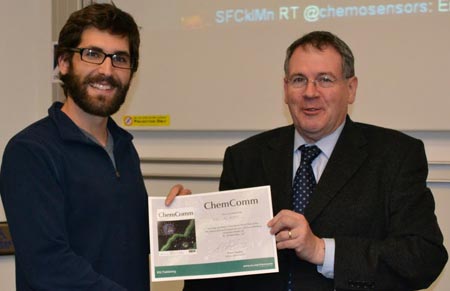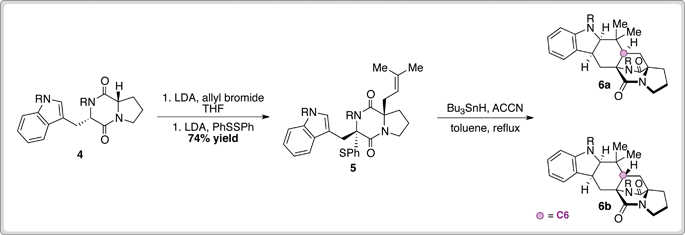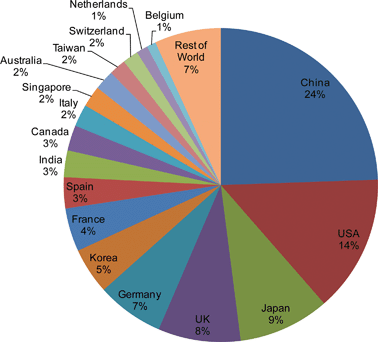This month sees the following articles in ChemComm that are in the top ten most accessed:-
Fe-catalysed oxidative C-H functionalization/C-S bond formation
Haibo Wang, Lu Wang, Jinsai Shang, Xing Li, Haoyuan Wang, Jie Gui and Aiwen Lei
Chem. Commun., 2012, 48, 76-78, DOI: 10.1039/C1CC16184A
1,3,5-Triphenylbenzene fluorophore as a selective Cu2+ sensor in aqueous media
Sakan Sirilaksanapong, Mongkol Sukwattanasinitt and Paitoon Rashatasakhon
Chem. Commun., 2012, 48, 293-295, DOI: 10.1039/C1CC16148B
Advanced fabrication of metal-organic frameworks: template-directed formation of polystyrene@ZIF-8 core-shell and hollow ZIF-8 microspheres
Hee Jung Lee, Won Cho and Moonhyun Oh
Chem. Commun., 2012, 48, 221-223, DOI: 10.1039/C1CC16213F
A novel ‘turn-on’ fluorescent chemosensor for the selective detection of Al3+ based on aggregation-induced emission
Tianyu Han, Xiao Feng, Bin Tong, Jianbing Shi, Long Chen, Junge Zhi and Yuping Dong
Chem. Commun., 2012, 48, 416-418, DOI: 10.1039/C1CC15681K
Ratiometric fluorescence detection of cyanide based on a hybrid coumarin-hemicyanine dye: the large emission shift and the high selectivity
Xin Lv, Jing Liu, Yunlong Liu, Yun Zhao, Yuan-Qiang Sun, Pi Wang and Wei Guo
Chem. Commun., 2011, 47, 12843-12845, DOI: 10.1039/C1CC15721C
Synthesis of isoindolinones via palladium-catalyzed C-H activation of N-methoxybenzamides
Dan-Dan Li, Ting-Ting Yuan and Guan-Wu Wang
Chem. Commun., 2011, 47, 12789-12791, DOI: 10.1039/C1CC15897J
Convenient and mild synthesis of nitroarenes by metal-free nitration of arylboronic acids
Xiao-Feng Wu, Johannes Schranck, Helfried Neumann and Matthias Beller
Chem. Commun., 2011, 47, 12462-12463, DOI: 10.1039/C1CC15484B
One-step synthesis of amino-functionalized fluorescent carbon nanoparticles by hydrothermal carbonization of chitosan
Yunhua Yang, Jianghu Cui, Mingtao Zheng, Chaofan Hu, Shaozao Tan, Yong Xiao, Qu Yang and Yingliang Liu
Chem. Commun., 2012, 48, 380-382, DOI: 10.1039/C1CC15678K
Porphyrin based porous organic polymers: novel synthetic strategy and exceptionally high CO2 adsorption capacity
Arindam Modak, Mahasweta Nandi, John Mondal and Asim Bhaumik
Chem. Commun., 2012, 48, 248-250, DOI: 10.1039/C1CC14275E
Metal-assisted salphen organic frameworks (MaSOFs) with high surface areas and narrow pore-size distribution
Michael Mastalerz, Hans-Jochen S. Hauswald and Raphael Stoll
Chem. Commun., 2012, 48, 130-132, DOI: 10.1039/C1CC14805B
Why not take a look at the articles today and blog your thoughts and comments below.
Fancy submitting an article to ChemComm? Then why not submit to us today or alternatively contact us with your suggestions.


















